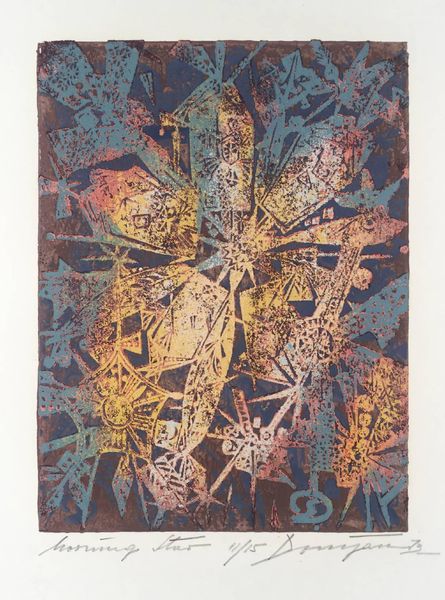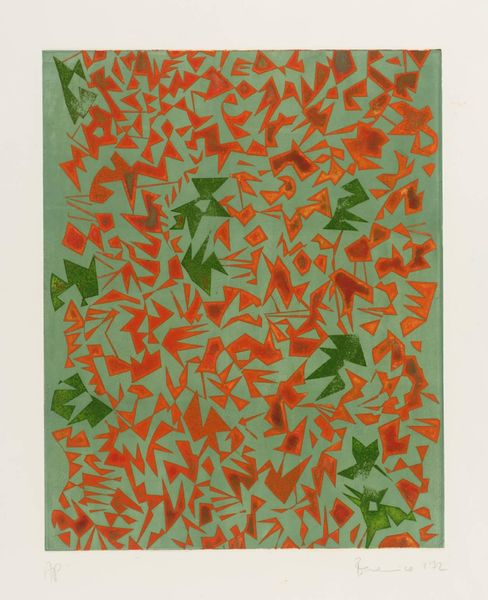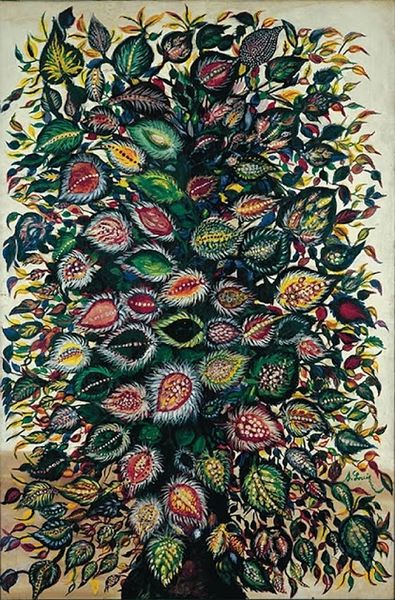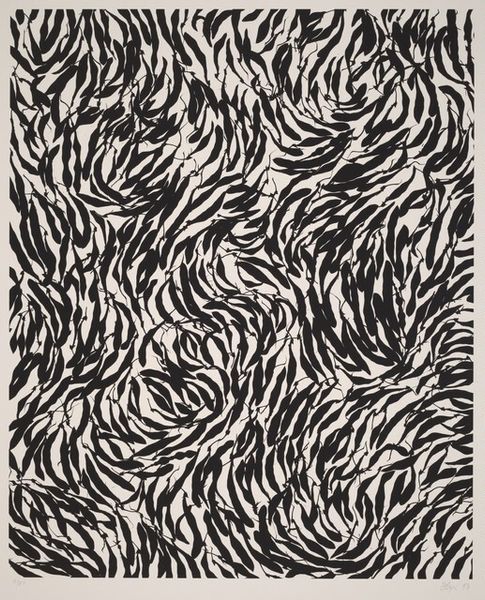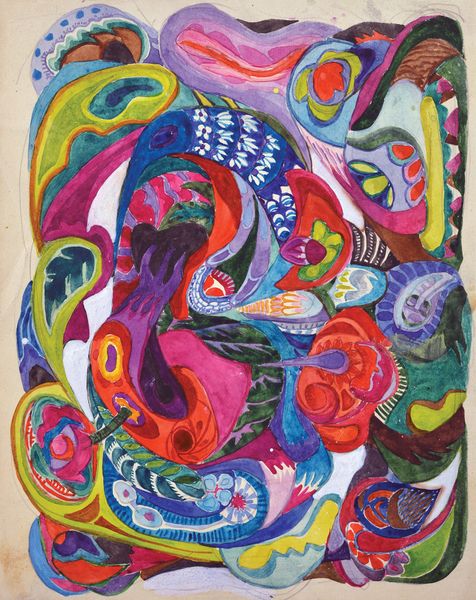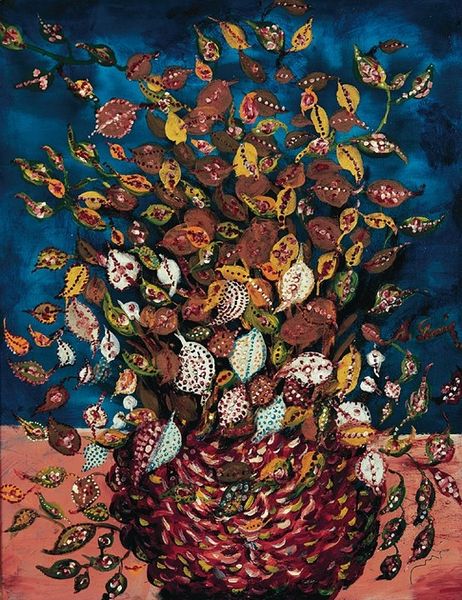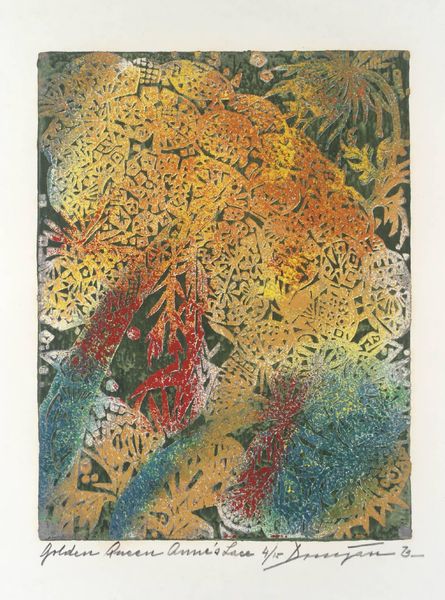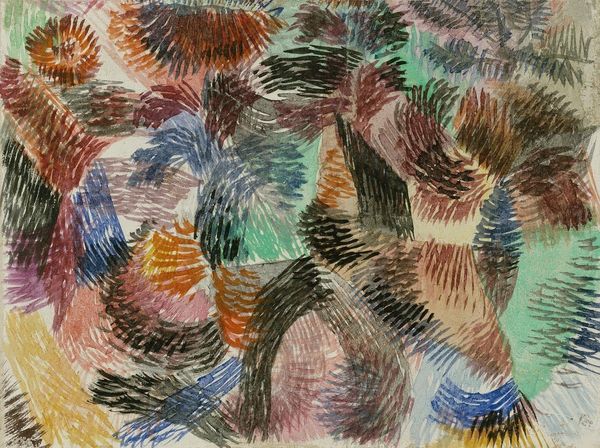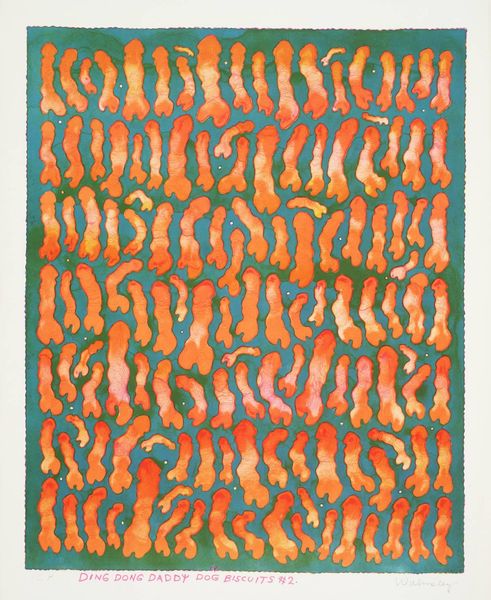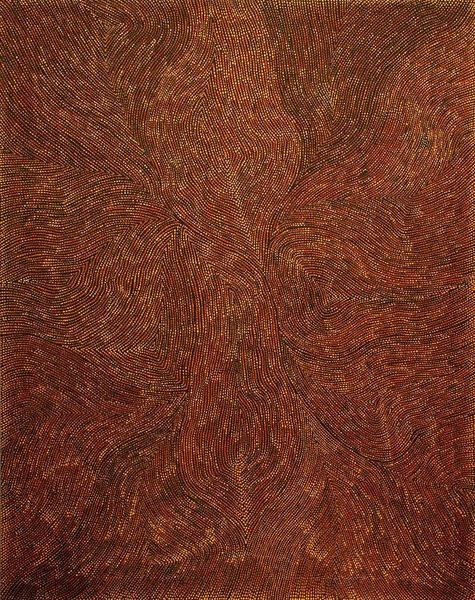
Copyright: Public domain
Curator: Stepping up close to this exuberant oil painting by Seraphine Louis, completed around 1920, one is immediately struck by its vibrant colors and dense composition. What are your first thoughts? Editor: It’s overwhelmingly lush! There’s something almost unsettling in its abundance – a little too much. Is it meant to overwhelm, do you think? A symbol for plenty or perhaps… hidden struggle? Curator: That’s fascinating. Louis, working often in isolation as a housekeeper, poured her creative energy into works like this, where she reportedly used house paint mixed with wax, leading to the exceptionally thick impasto texture we see. It suggests an element of self-sufficiency and resourcefulness that goes beyond just artistic expression. The materials were at hand; making art became integrated with daily life. Editor: That's compelling! Knowing the artist's background provides so much depth. One can interpret the vibrant florals not merely as pretty still life, but possibly a bold declaration of self, a claim of identity and resilience constructed against the constraints placed on her as a working-class woman during that period. Does the scale itself suggest empowerment, or is that a leap? Curator: The size of her paintings – some quite large – coupled with the physicality of her application definitely speak to ambition and an engagement with artistic practices far beyond craft tradition. Though not formally trained, she had the vision to move beyond simple imitation of the natural world. The patterns push towards the symbolic. Editor: Yes! It resonates with broader questions about female labor and visibility. Were her domestic tasks at odds with her artistic passions, or did one somehow inform the other, especially considering her painting subjects? Her use of everyday materials is also intriguing: how were those choices made in relation to socioeconomic conditions in early twentieth century France? Curator: Her patronage from Wilhelm Uhde provided an outlet, a crack of light that recognized her talent and dedication. This interplay—poverty and opportunity—shaped her production and her standing in the art world, which itself had to grapple with changing attitudes towards folk art. Editor: Exactly, art historians often relegate self-taught artists like Séraphine to the margins, perpetuating societal imbalances and undervaluing narratives. By studying figures like Séraphine, we're really asking questions of cultural and gendered values within art. Curator: Indeed. Approaching "Fleurs et Fruits" purely as still life is a limiting exercise. There’s a powerful tension within her process, bridging labour and passion. Editor: I'll leave with this expanded viewpoint on Séraphine's "Fleurs et Fruits;" the flowers seem not merely observed, but desperately brought to life on her terms.
Comments
No comments
Be the first to comment and join the conversation on the ultimate creative platform.
